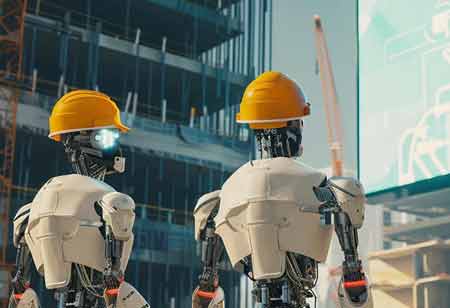Thank you for Subscribing to Construction Business Review Weekly Brief
Specials
- Apartment and Condominium Contractors Canada
- Decking Canada
- Architectural Glass Europe
- MEP APAC
- Construction Saudi Arabia
- German Apartment and Condominium Contractors
- Construction Law APAC
- Outdoor Construction
- Foundation Construction Canada
- MEP Canada
- Kitchen and Bath
- Cold Storage Construction APAC
- Precast Concrete Europe
- Construction Staffing Europe
- Pre-Construction Services
- Flooring System APAC
- Scaffolding Canada
- Swimming Pool Construction Canada
- Construction Management Canada
- Cold Storage Construction Canada
- Flooring Systems Europe
- Residential Construction
- Concrete Canada
- Construction Cladding Europe
- Construction Cladding APAC
- Concretes, Aggregates and Construction Materials APAC
- Concretes, Aggregates and Construction Materials Europe
- Commercial Contractors Europe
- Commercial Contractors APAC
- Dummy
- Construction Insulation, Coating and Waterproofing
- Construction Management APAC
- Landscaping Canada
- Construction Coating Europe
- Construction Tech Startups Europe
- Insulation Services Europe
- Mechanical Contractor Canada
- Mould Remediation and Testing Europe
- Swimming Pool Construction APAC
- Building Sealing Solutions Europe
- Construction Engineering Services
- Mechanical Electrical and Plumbing
- Roofing Systems Europe
- Architectural Glass APAC
- Startups APAC
- Construction Forensic and Owners Representative
- Flooring System
- Waterproofing APAC
- Wall Systems
- Safety and Compliance Europe
- Construction Bidding and Auctions
- Modular and Prefab Construction
- Architectural Glass
- Construction MENA
- Construction Demolition and Recycling Europe
- Modular Construction Europe
- Construction Interiors
- Steel Building APAC
- HVAC
- Doors and windows
- Construction Latam
- Building Information Modeling APAC
- Sustainable Construction APAC
- Building Restoration and Maintenance
- Commercial Contractors
- Specialty Construction
- Construction Engineering Canada
- Construction Engineering MENA
- Modular Construction Canada
- Modular Construction APAC
- Roofing and Siding Systems
- Workforce Management and Staffing
- Roofing Systems APAC
- Construction Consulting
- Steel Building Europe
- Construction Demolition and Recycling APAC
- Safety and Compliance APAC
- Concretes, Aggregates and Construction Materials
- Construction Cladding
The New Era of Drywall In Modern Construction
The drywall construction space is experiencing significant innovation and evolution as it adapts to new trends in construction practices, environmental sustainability, and technological advancements.

By
Construction Business Review | Monday, October 21, 2024
Stay ahead of the industry with exclusive feature stories on the top companies, expert insights and the latest news delivered straight to your inbox. Subscribe today.
The drywall construction space is experiencing significant innovation and evolution as it adapts to new trends in construction practices, environmental sustainability, and technological advancements. While drywall has been a staple of modern construction for decades, recent developments are pushing the boundaries of what this material can do, impacting efficiency, sustainability, and performance in both residential and commercial construction.
One of the key trends driving innovation in drywall construction is the increasing demand for sustainable building materials. With a greater focus on reducing the carbon footprint of construction projects, the industry is seeing a rise in eco-friendly drywall products. Manufacturers are now offering gypsum boards made from recycled content, and some are even producing boards that are entirely recyclable at the end of their life cycle. This shift is in response to both regulatory pressures and market demand, as builders and developers prioritize sustainability certifications like LEED (Leadership in Energy and Environmental Design). Additionally, the push for net-zero energy buildings is motivating the industry to explore how drywall products can contribute to energy efficiency, whether through thermal insulation improvements or the use of materials with lower embodied energy Another trend gaining traction is the rise of prefabrication and modular construction methods, which are transforming the way drywall is used on job sites. Prefabricated drywall panels, custom-sized and ready for installation, are streamlining the construction process by reducing the need for on-site cutting and modification. This not only speeds up project timelines but also minimizes waste, which is another environmental benefit. The ability to mass-produce panels in a controlled environment ensures consistent quality and reduces the chance of errors that can occur in traditional drywall installations. Modular construction, which involves creating entire sections of a building off-site and then assembling them on location, also relies heavily on drywall prefabrication, making it a key component of this growing trend.
Technology is playing a transformative role in drywall construction as well. Building Information Modeling (BIM) is becoming an essential tool for contractors and architects working with drywall. BIM allows for precise planning and coordination across multiple trades, ensuring that drywall installations are accurate and integrated seamlessly into the overall building design. This reduces costly mistakes and rework, while also improving communication among all stakeholders in a project. Additionally, advancements in robotic and automated drywall installation are beginning to emerge. Automated machines capable of hanging drywall with high precision are being developed, and while they are still in the early stages of adoption, they hold the potential to further reduce labor costs and increase efficiency on job sites.





